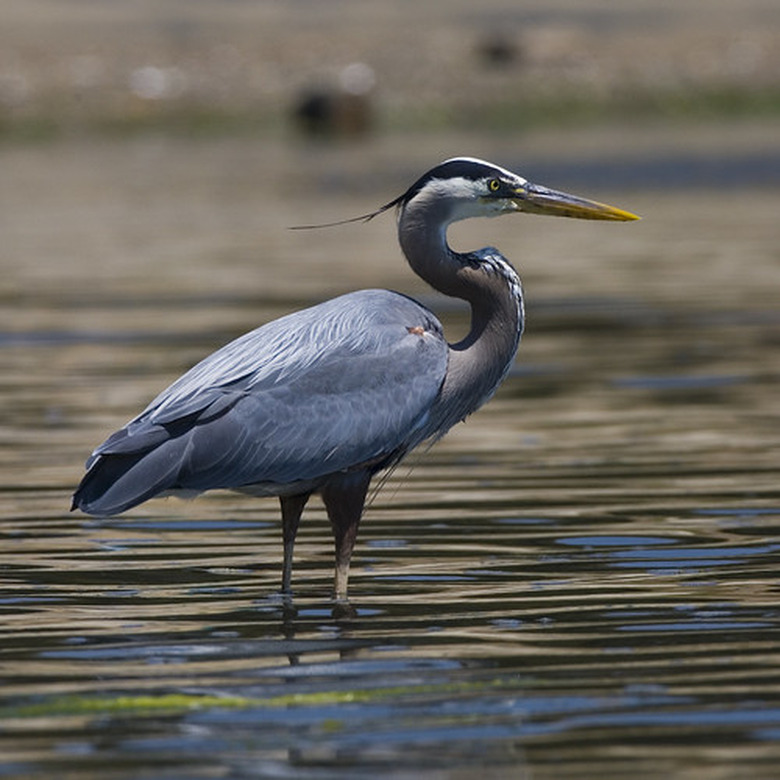Is The Great Blue Heron An Endangered Species?
The great blue heron is the most widely distributed heron in North America. It is so plentiful that it is listed as a species of least concern by the International Union of Conservation and Nature.
Habitat
Habitat
The largest of the American herons, the great blue heron lives along the coast, near rivers or by lakes, ponds and swamps.
Geography
Geography
The range of this bird extends from its summer homes in northern Canada and Alaska, throughout the lower 48 states and into Mexico, Central and South America.
Feathers
Feathers
While other large wading birds suffered from people killing them for their plumes and feathers, the great blue heron laregely avoided this fate.
Pesticides
Pesticides
Pesticides took their toll on many types of birds. Again, the great blue heron was less susceptible to the effects of these poisonous compounds less than many other birds that feed in or near the water, such as the osprey.
Fish
Fish
Herons have a habit of assembling close to fish hatcheries and feeding on easy-to-catch sicker fish. Fish are the main staple of the heron's diet; some have actually choked to death on fish they could not swallow completely.
References
- All About Birds:Great Blue Heron
- "Familiar Birds of North America-East", Alfred A. Knopf, 1995
Cite This Article
MLA
Lindell, John. "Is The Great Blue Heron An Endangered Species?" sciencing.com, https://www.sciencing.com/great-blue-heron-endangered-species-5780702/. 22 November 2019.
APA
Lindell, John. (2019, November 22). Is The Great Blue Heron An Endangered Species?. sciencing.com. Retrieved from https://www.sciencing.com/great-blue-heron-endangered-species-5780702/
Chicago
Lindell, John. Is The Great Blue Heron An Endangered Species? last modified March 24, 2022. https://www.sciencing.com/great-blue-heron-endangered-species-5780702/
